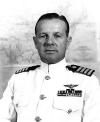Hobby Master HA0200 USN Douglas SBD-3 Dauntless Dive-Bomber - LCDR Wade McClusky, Enterprise Air Group Commander, Midway, June 4th, 1942 (1:32 Scale)
"Peering through my binoculars which were practically glued to my eyes, I saw dead ahead about 35 miles distant the welcome sight of the Jap carrier striking force. They were in what appeared to be a circular disposition with four carriers in the center, well spaced, and an outer screen of six to eight destroyers and inner support ships composed of two battleships and either four or six cruisers."
- LCDR Wade McClusky, leading the aerial attack against the Japanese strike force during the Battle of Midway, June 4th, 1942
 The Dauntless was the standard shipborne dive-bomber of the US Navy from mid-1940 until November 1943, when the first Curtiss Helldivers arrived to replace it. Between 1942-43, the Dauntless was pressed into service again and again, seeing action in the Battle of the Coral Sea and the Guadalcanal campaign. It was, however, at the Battle of Midway, that the Dauntless came into its own, singlehandedly destroying four of the Imperial Japanese Navy's frontline carriers. The SBD (referred to, rather affectionaly by her aircrews, as "Slow But Deadly") was gradually phased out during 1944. The June 20th, 1944 strike against the Japanese Mobile Fleet, known as the Battle of the Philippine Sea, was the last major engagement in which it was used. From 1942 to 1944, the SBD was also used by several land-based Marine Corps squadrons.
The Dauntless was the standard shipborne dive-bomber of the US Navy from mid-1940 until November 1943, when the first Curtiss Helldivers arrived to replace it. Between 1942-43, the Dauntless was pressed into service again and again, seeing action in the Battle of the Coral Sea and the Guadalcanal campaign. It was, however, at the Battle of Midway, that the Dauntless came into its own, singlehandedly destroying four of the Imperial Japanese Navy's frontline carriers. The SBD (referred to, rather affectionaly by her aircrews, as "Slow But Deadly") was gradually phased out during 1944. The June 20th, 1944 strike against the Japanese Mobile Fleet, known as the Battle of the Philippine Sea, was the last major engagement in which it was used. From 1942 to 1944, the SBD was also used by several land-based Marine Corps squadrons.
Built as a two-seat, low-wing Navy scout bomber, the Dauntless was powered by a single Wright R1820 1200-horsepower engine. It became the mainstay of the Navy's air fleet in the Pacific, suffering the lowest loss ratio of any U.S. carrier-borne aircraft. A total of 5,936 SBDs were delivered to the Navy and Marine Corps between 1940 and the end of its production, in July 1944.
This particular 1:32 scale replica of a US Navy SBD-3 Dauntless dive-bomber was flown by Lieutenant Commander Wade McClusky assigned to the Enterprise Air Group during the Battle of Midway, fought June 4th, 1942. Only 900 pieces produced.
Sold Out!
Dimensions:
Wingspan: 15-3/4-inches
Length: 12-1/2-inches
Release Date: March 2008
Historical Account: "The Search Continues" - Rear Admiral Clarence Wade McClusky, Jr., was a Naval Aviator in the United States Navy during World War II. He is credited with playing a major part in the Battle of Midway. In the words of Admiral Chester Nimitz, McClusky's decision to continue the search for the enemy and his judgment as to where the enemy might be found, "decided the fate of our carrier task force and our forces at Midway...".
C. Wade McClusky, Jr. was born in Buffalo, New York, on June 1st, 1902.
He graduated from the United States Naval Academy in 1926 and became a Naval Aviator three years later. Over the next decade, he served in several air units, as well as on command staffs, as an instructor at the Naval Academy and at shore facilities. In 1940, he was assigned to Fighting Squadron Six (VF-6), based on USS Enterprise (CV-6), and assumed command of that squadron in April 1941.
 Lieutenant Commander McClusky became Enterprise air group commander in April 1942. During the Battle of Midway, while leading his air group's scout bombers on June 4th, 1942, he made the critical tactical decision that led to the destruction of the Japanese aircraft carriers Kaga and Akagi, thus making a vital contribution to the outcome of that pivotal battle. Later in World War II, he commanded the escort carrier Corregidor (CVE-58).
Lieutenant Commander McClusky became Enterprise air group commander in April 1942. During the Battle of Midway, while leading his air group's scout bombers on June 4th, 1942, he made the critical tactical decision that led to the destruction of the Japanese aircraft carriers Kaga and Akagi, thus making a vital contribution to the outcome of that pivotal battle. Later in World War II, he commanded the escort carrier Corregidor (CVE-58).
After the war, Captain McClusky served in a variety of staff and shore positions in the later 1940s. During the Korean War, he was Chief of Staff to the Commanders of the First and Seventh Fleets. He commanded NAS Glenview, Illinois, in 1952-53, and the Boston Group of the Atlantic Reserve Fleet in 1954-56. McClusky retired from active duty in July 1956. At that time, in recognition of his vital contributions to the outcome of World War II, he was advanced to flag rank. The USS McClusky (FFG-41) was named in his honor.






